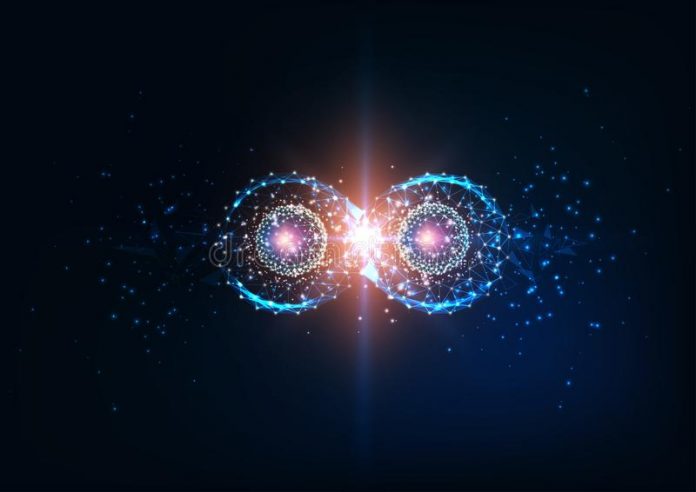A team of physicists at the Massachusetts Institute of Technology (MIT) announced that they have developed a technique for entangling atoms that has allowed them to quantum-mechanically connect thousands of atoms. This could lead to advances in quantum computing, quantum metrology, more precise atomic clocks, among others.
Quantum entanglement is a physical phenomenon that occurs when multiple particles interact such that the quantum state of each particle cannot be described independently. In other words, two or more particles will change their quantum numbers in the same way regardless of the distance between them.
“You can make the argument that a single photon cannot possibly change the state of 3,000 atoms, but this one photon does – it builds up correlations that you didn’t have before,” said Vladan Vuletic, the Lester Wolfe Professor in MIT’s Department of Physics, and the paper’s senior author. “We have basically opened up a new class of entangled states we can make, but there are many more new classes to be explored.”
While useful entanglements of as many as 100 atoms have been produced before, these prior results displayed either non-Gaussian entangled states or Gaussian spin distribution functions with a non-negative Wigner quasiprobability distribution function. The MIT team used a very weak laser pulse which prepared several thousand entangled atoms. Unlike previous results, the Wigner function was negative and the entanglement of several thousand atoms was nearly complete; 2,910±190 out of 3,100 atoms were entangled.
“The technique significantly broadens the options for generating and operating on non-classical, entangled states of atomic ensembles,” said Eugene Polzik, a professor of quantum optics at the Niels Bohr Institute who was not involved in the research. “As such, it can be useful for clocks, quantum sensing of magnetic fields, and quantum communication.”
Further efforts will focus on increasing the purity of the entanglement beyond the 93.87±6.13 percent which has been achieved and on entangling even larger ensembles of atoms. This will allow for entanglement-induced metrological gain and more complex quantum states for computing and timekeeping. The current result of entangling about 29 times more atoms than had been previously entangled can allow for a 5.4-fold increase in accuracy of atomic clocks.
“Today’s clocks are really amazing,” Vuletic said. “They would be less than a minute off if they ran since the Big Bang – that’s the stability of the best clocks that exist today. We’re hoping to get even further.”















